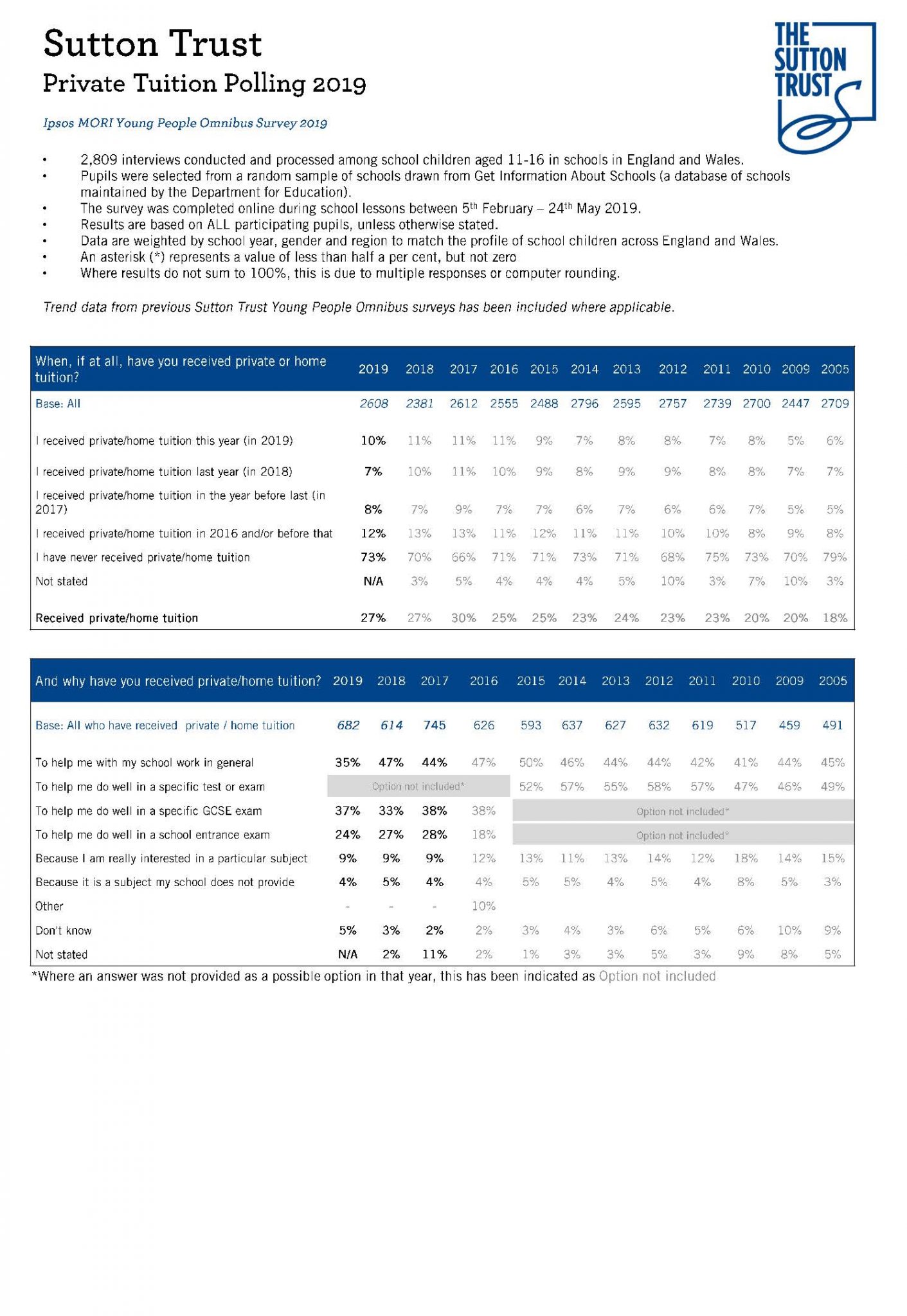Report Overview
For the first time this year we surveyed schools on how they interact with paid-for private tuition, conducted by the National Foundation for Educational Research (NFER). Findings show a number of secondary school teachers have taken on paid-for private tuition outside of the classroom, with most having done so after direct contact with parents. This highlights the importance parents place on tutoring.
In addition, ‘Private Tuition 2019’ reveals findings from our annual barometer of how prevalent private tuition is in England and Wales. Conducted by Ipsos MORI, we look at how common receiving private tuition has been over time and who is most likely to receive this extra help.
Over a quarter of 11-16 year-olds say they have received private tuition, rising to 41% in London.
A third of those from richer homes have had tutoring, compared to 20% from poorer homes.
A quarter of secondary school teachers have tutored privately outside school.
- A quarter (24%) of secondary school teachers have taken on private tuition outside school in the past two years, according to new polling published by the Sutton Trust today.
- Two-thirds of the teachers who had tutored had done so after direct contact from parents. A much smaller proportion had tutored through an agency, or a non-profit organisation.
- Despite secondary school teachers being more likely to have tutored outside of school than primary teachers (24% vs 14%), heads in primary schools were more likely to say that their school had sent parents information about private tutoring (18% vs 11%).
- 27% of 11-16 year olds in England and Wales have had private tuition at some point, the same as 2018, but up from 18% when the survey first began in 2005.
- This figure rises to 41% in London (up from 37% in 2014), where young people are more likely to have had private tuition than in any other region of the UK.
- However, students who receive private tuition disproportionately come from better-off backgrounds. Those from ‘high affluence’ households (34%) are more likely than those from low affluence households (20%) to have received such tuition at some point.
- To level the playing field outside of the classroom, the Trust is recommending that more one-to-one and small group tuition is provided through Pupil Premium spending, but that the government should look at providing sustainable funding for access to tuition, potentially through a means-tested voucher scheme.
- Tutors should be experienced and well-qualified (not all tutors have specific teaching qualifications).
- It is crucial that schools themselves are resourced adequately to provide a quality education to all pupils regardless of background – evidence from the EEF suggests that good teaching skills are crucial in improving the attainment of disadvantaged students, who often lag behind their advantaged peers.
- The Trust would also like to see more private tuition agencies provide a certain proportion of their tuition to disadvantaged pupils for free, as well as an expansion of non-profit and state tuition programmes that connect tutors with disadvantaged schools. Agencies like Tutorfair, MyTutor and Tutor Trust operate innovative models in this area.



